
As a beginner violinist, practicing finger dexterity exercises can be a huge help in advancing your left hand movements quickly. We use our left hand fingers to press the notes on the fingerboard, and many violin pieces require small but rapid, accurate movements.
Improving dexterity in your left hand will help you play more in tune, more accurately, and will help you learn music faster. These are all great wins when you’re learning the violin!
Today I’m sharing with you some helpful exercises you can practice at home (both with and without your violin!) to improve your finger dexterity for violin playing.
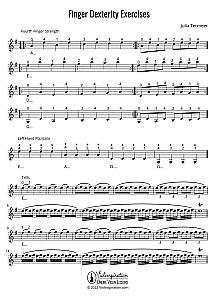
Finger Dexterity Exercises for Beginners
Download Free Exercises
Stretch First
Before practicing these exercises for improving dexterity, be sure to take a few minutes to focus on a gentle stretch to warm up your muscles before working them hard. If you’d like, you can watch my pre- and post-practice stretching routine for some tips.
If you experience wrist pain from these hand exercises, or if you regularly experience pain while playing the violin, please take a break. These exercises can provide a moderate stretch to increase the range of motion in your left hand, but with too much use, the median nerve in your hand can cause pain through your fingers, palm, and into left arm.
I have a few tips over here about relieving pain and relaxing the left hand, but if you experience anything intense, please take a pause from playing and see a doctor for professional and personalized advice.
3 Best Finger Dexterity Exercises for Violinists
There are a number of exercises that you can do to improve your finger dexterity. From my experience, the three following exercises are the most important for a violin beginner.

Finger Dexterity Exercises for Beginners
Download Free Exercises
Fourth Finger Exercises
Many violin beginners struggle playing notes with the fourth finger (pinky finger), because it’s the shortest finger, and its muscles are connected to the third finger (ring finger).
Practicing exercises that focus on the fourth finger is an excellent way to strengthen the little finger and to help it gain independence from the other, stronger fingers.
Here’s a video tutorial where I share my favorite fourth finger exercise:
I like to start by practicing this exercise on the A string, and then the E string. The pinky finger doesn’t need to extend quite as far on the higher strings as it does on the lower ones. So, it makes starting this exercise on the A and E strings a bit easier on all your fingers and your left arm.
Once you’re ready to move to the D and G strings, bring your left elbow in closer to your body to naturally extend your pinky finger without stretching it directly and causing pain.
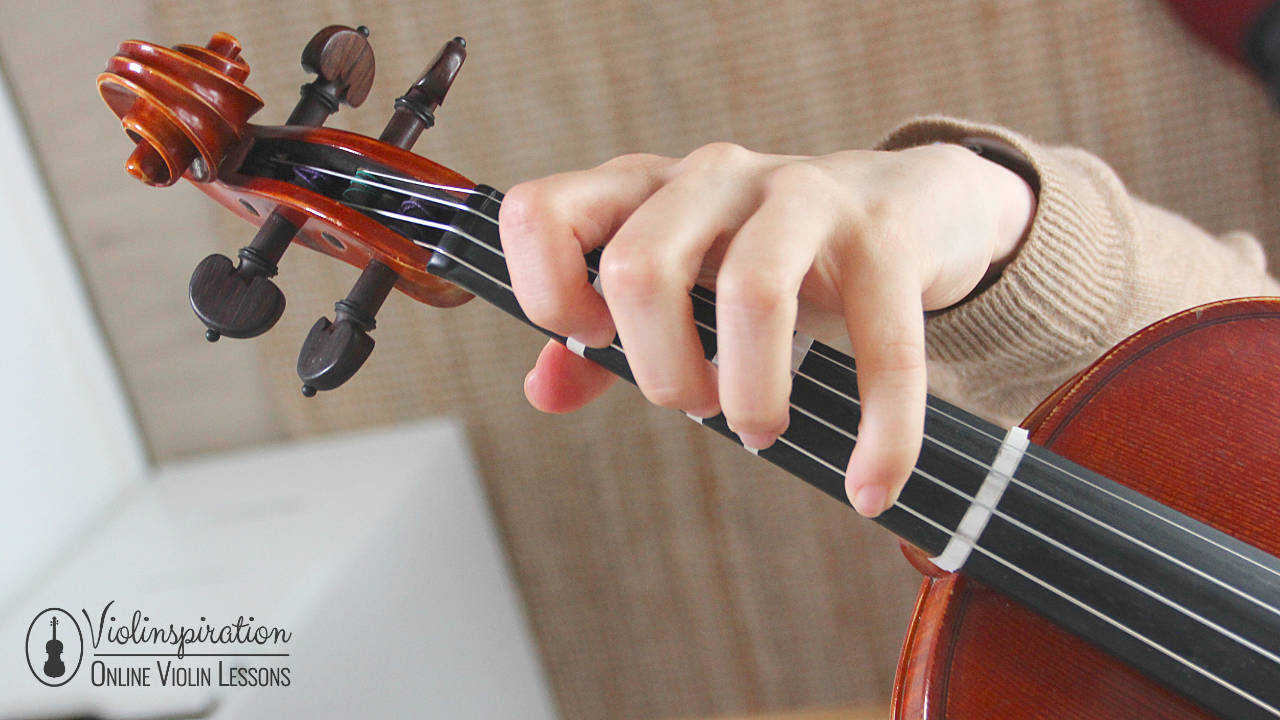
Since the fourth finger is the shortest and weakest, you might find you have less stamina to practice this exercise than you might for other warm-ups. That’s totally normal. Start with what feels good in your body, and then the more often you practice this exercise, the more endurance you’ll build up.
Left Hand Pizzicato
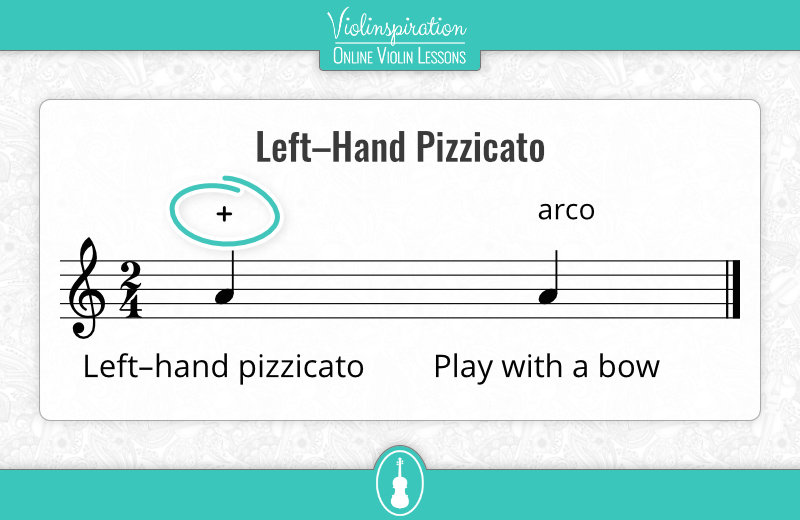
Did you know that plucking the string with your left hand is the pizzicato technique used in some advanced violin music? Here’s a demonstration of what it looks like:
Even though you might not need to learn left hand pizzicato for the specific music you’re learning, it’s a great way to gain finger independence and strength.
Practice plucking any open string with your fourth finger. You’ll need to hook your finger around the string just a bit to create an audible sound that compares to the volume you get from playing right hand pizzicato.
It’s pretty difficult to only pluck one string and get a clear tone at the same time, isn’t it?! Now try the same technique with the third finger. It may feel a tiny bit easier, especially if you move the two fingers together as one unit. Try the other two fingers as well!
Experimenting with left hand pizzicato is a very effective way to expand your range of motion and gain finger independence quickly.
Trills
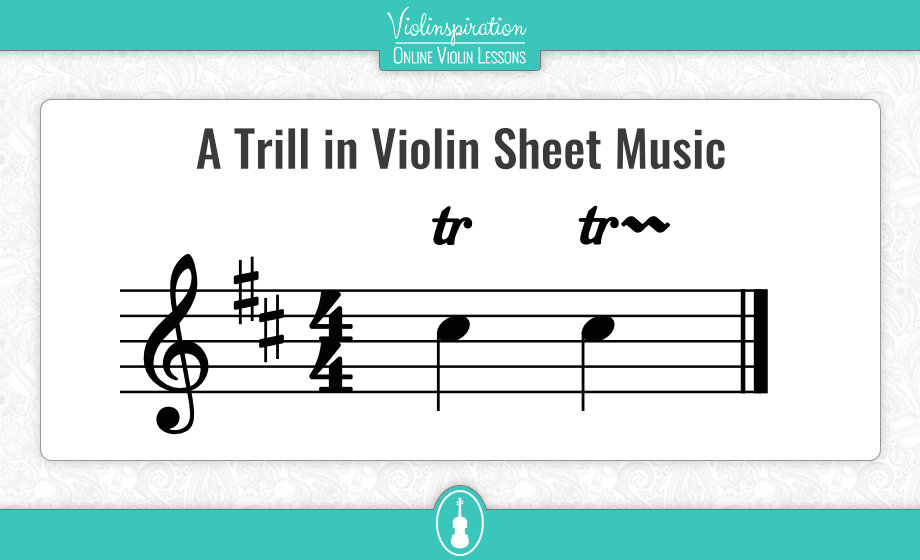
A trill is ornamentation where we rapidly switch between two notes a half step apart within one bow stroke. Trills require fast, accurate movements between two fingers, so practicing this technique will quickly build your fine motor skills.
I have an exercise for learning trills that’s also super effective for building finger independence!
Play notes on a chosen string with the first and second fingers as quarter notes. As a starter, play two notes on a bow stroke. Next, without changing the tempo, play the same notes as eighth notes. Continue by playing triplets, 16th notes, and then 32nd notes. Finally, tap as fast as possible!
Bonus: an Excerpt from Schradieck, Etude 1
Are you ready for a more challenging exercise? Here is an excerpt from Schradieck’s School of Violin Technics, Book 1, etude 1.
In this exercise, it’s very important to put down all your fingers. For example, when there’s a D note, press the string with your third finger and also put your first and second fingers on the string. If there’s a C note, remember to press the string also with the first finger, and when you have to use your fourth finger, place all fingers below as well.
You can start this exercise very slowly with one note per bow stroke. Later, when your fingers are ready for a quicker tempo, gradually increase it and try playing 2, 4, 8, 16, and even 32 notes on one bow stroke.
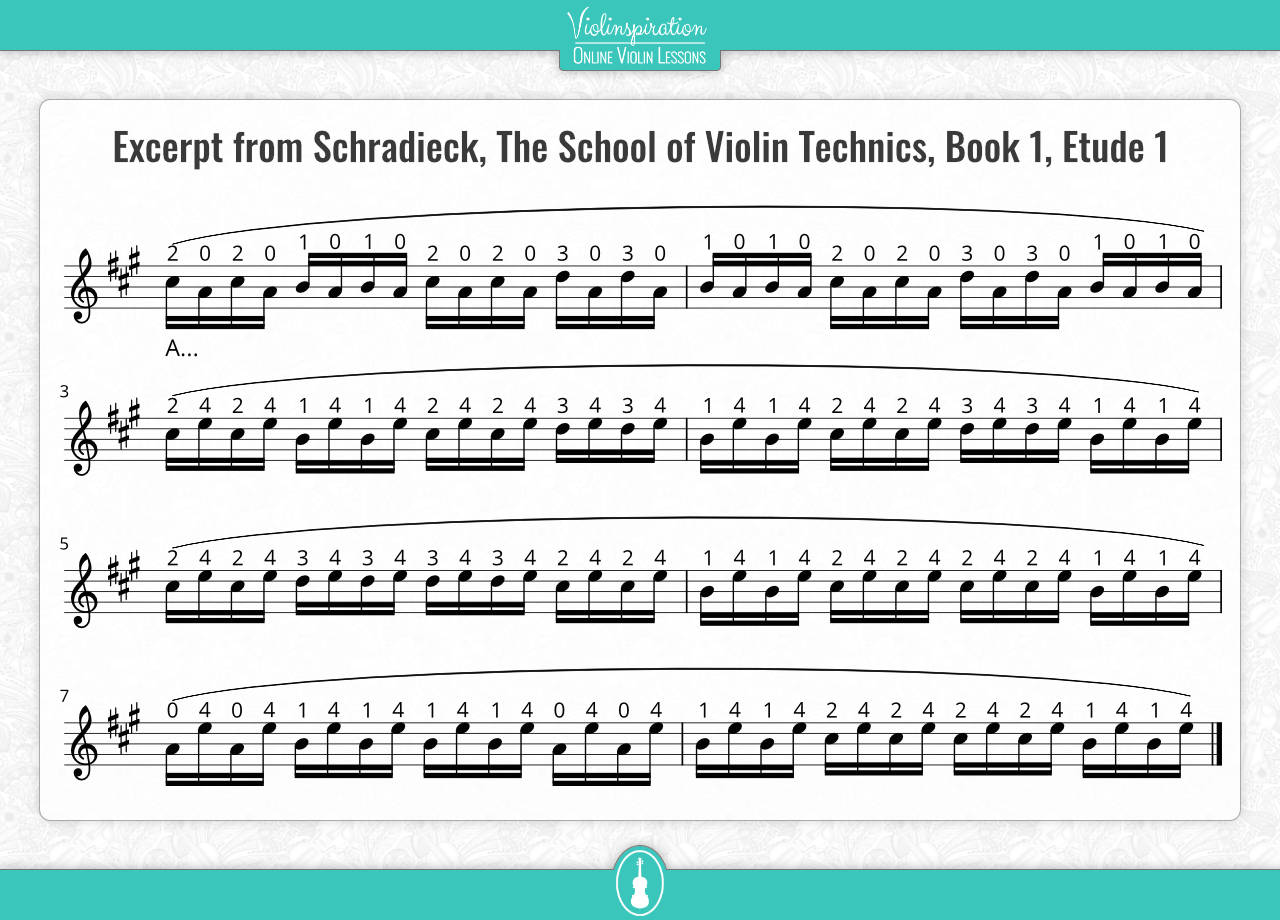
Do you like such challenging exercises? You may like to try out other snippets from Schradieck’s book. You can download it for free here:
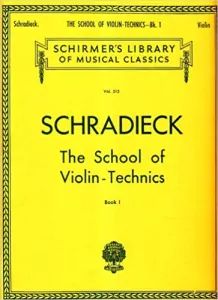
School of Violin Techniques by Henry Schradieck
Free Violin Sheet Music
How can I increase dexterity in my fingers away from the violin?
There are also some helpful ways for you to gain finger flexibility when you’re away from your violin. Here are three great exercises:
Lifting one finger at a time
When you’re working or sitting at a table, lay your hand palm down. Practicing lifting just one finger up at a time, while you leave all the other fingers straight on the flat surface. This is a great exercise to practice on a desk!
Gently lift your fingers in order from 1-4, then reverse it. For an extra challenge, lift your fingers in a random order, like 4-2-1-3. If you’d like an even harder version, lift two fingers at a time, like 1 and 3 or 2 and 4. This actually requires a lot of brain power and concentration!
Squeeze a ball
Find a squishy ball, like a small stress ball. Squeeze the ball in your palm, focusing the movement in your finger joints by gently bending them. Start and end by making a gentle fist around the squeeze ball.
Hand Exerciser
Purchasing a hand grip strengthener can help you gain a lot of strength and finger independence away from your violin.
Turning the screws on the bottom of the device changes the tension of each button. You can improve your finger strength by pressing down one button at a time, or all at once. You can also practice different finger patterns on the buttons.
I suggest starting with low intensity to get a feel for the hand grip strengthener. Then you can adjust the pressure to make the buttons firmer and more difficult to press down once you’ve worked up to it.
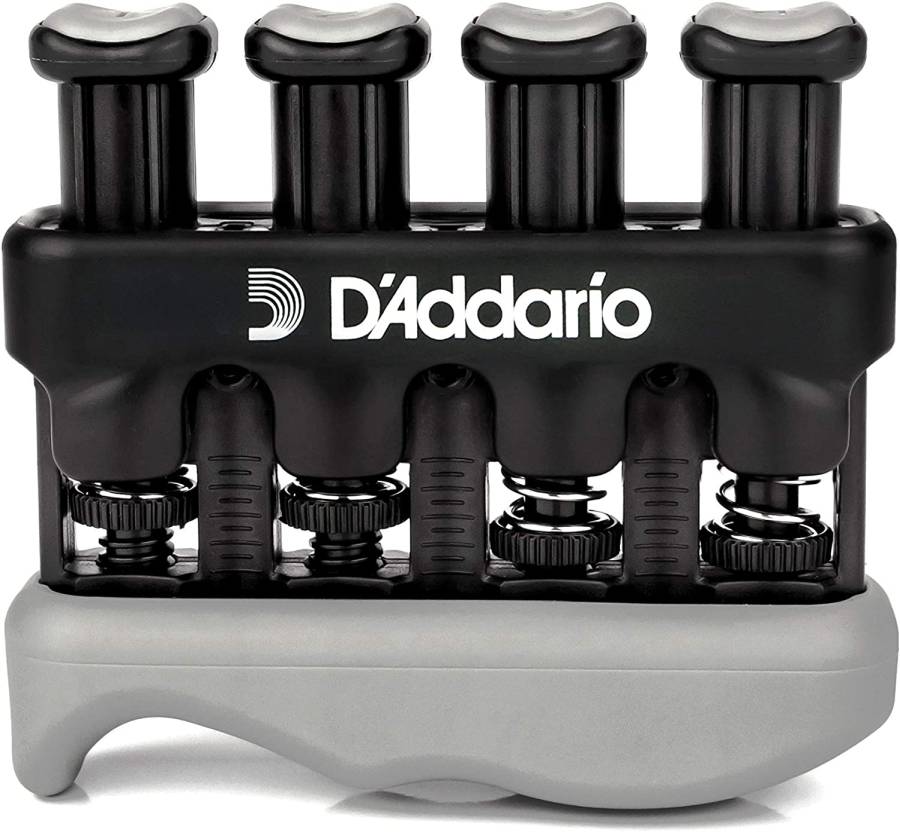
FAQ
What is finger dexterity good for?
Working on finger dexterity is good for string players for training fingers on how to move optimally and individually to create the sounds and patterns the music calls for. Building up finger dexterity will help you learn music faster and more accurately. Increasing your range of motion and stamina will also help violin playing feel more comfortable in your body!
The left hand fingers create the notes on the violin, and the more difficult music we play, the more demanding it will be on our fingers. Music may be new for you, and if it is, then it’s also a new physical activity for your fingers!
What activities naturally improve dexterity?
There are a few helpful activities you might already be doing that can help improve dexterity for violin playing:
Violin Scales
Scales naturally improve finger dexterity! Moving one finger at a time slowly helps build fine motor skills. I highly suggest practicing scales and arpeggios as a warm-up each and every time you practice, because it’s a great way to get your fingers moving.
Don’t have your set of violin scales yet? You can download them below:
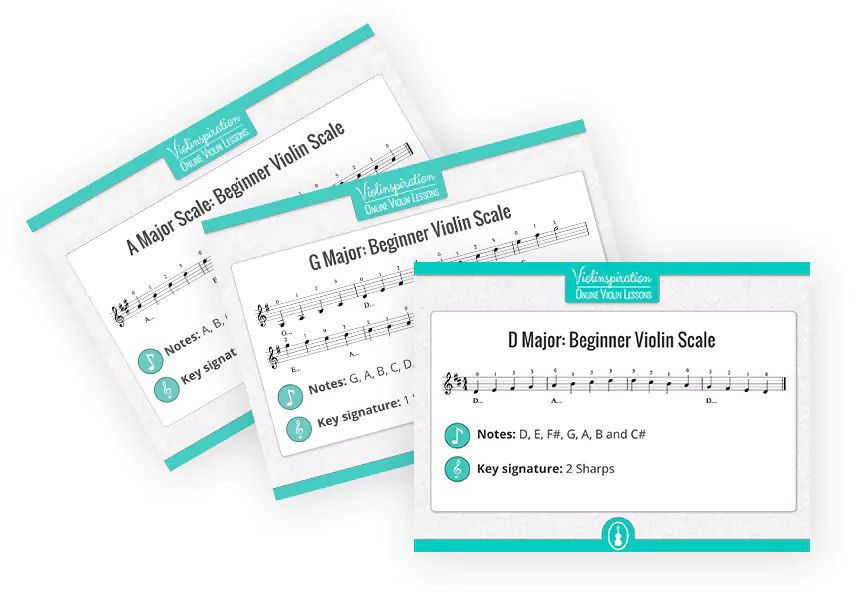
5 Most Common Violin Scales For Beginners
Download Free Exercises
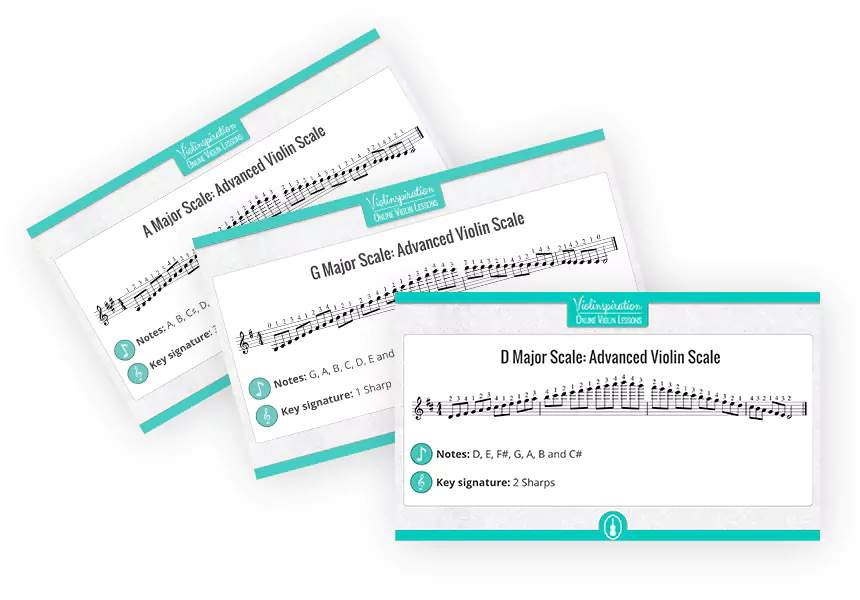
5 Most Common 3-Octave Scales
Download Free Exercises
Playing the Piano
Playing the piano is another great way to improve finger dexterity! If you’re playing the piano for fun, the patterns you play on the keys also help to improve the independence between each finger. It’s also a great way to improve your independence between each hand since they’re usually playing entirely different patterns.
Final note
Gaining finger dexterity is very important to advance your violin playing. Practicing these hand exercises will help build up your finger strength and independence to perform more difficult music and patterns. It’s also a great brain workout!
Violin music calls for quick, accurate movements with the small muscles in our hands, which is why we want to build up our finger independence. Would you like more information about finger dexterity, and why it’s something you want to work at? Read my first article on the topic for more information.
Please remember, take breaks when practicing any exercise and if you experience long-term pain, please visit a medical professional for advice.

Finger Dexterity Exercises for Beginners
Download Free Exercises























